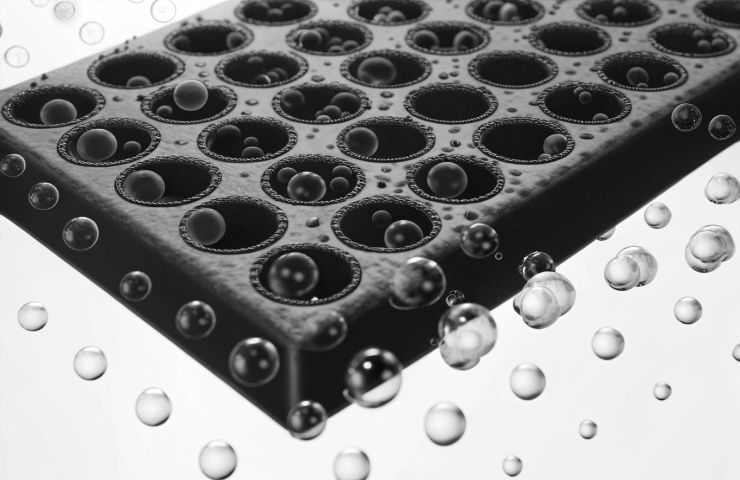
PEMWE Hydrogen Production Breakthrough: Sb-Doped Nanoplatelet Catalysts Built for the Future
August 11, 2025If you’ve been following the race to roll out green hydrogen technology, you know it’s the secret sauce for slashing carbon in power grids, heavy industry, and even transportation. Right at the heart of this revolution is PEMWE hydrogen production—those sleek proton exchange membrane water electrolysis systems that churn out ultrapure hydrogen at lightning speed when paired with renewables. Governments and corporations have set their sights on driving costs below $2 per kilogram by 2030, but today’s reality still hovers around $4–6. The culprit? Those catalyst materials aren’t cheap. Industry heavyweights like Bosch are pouring billions into new PEMWE stacks, yet the catalyst bottleneck remains. Then along came a fresh peer-reviewed study showing how a simple twist—doping carbon supports with antimony-doped catalysts—can flip the script on performance. As Dr. Anya Petrova, I’m convinced this hands-on solution could help us meet both national and international climate goals faster than we thought.
Historical Context: Why This Matters Now
Flash back to the 1990s, when the first PEM electrolyzers hit the scene. Early research bounced between alkaline systems and solid oxide electrolysis—each with its own quirks in efficiency and footprint. Fast-forward to the 2010s, and PEMWE deployments skyrocketed, but experts soon ran into a familiar roadblock: platinum catalyst durability was only measured in hundreds of hours, not the thousands we need. Reviews from the Royal Society of Chemistry and ACS Chemical Reviews flagged that tackling both cost and durability was non-negotiable for gigawatt-scale growth. Enter antimony doping—a potential game-changer against that backdrop.
The Big Splash: Antimony Takes the Stage
Most earlier studies chased after light dopants—nitrogen, phosphorus, boron—to eke out minor gains. Heavy hitters like antimony were largely written off, thanks to tricky synthesis and worries about messing up the carbon lattice. But this new research team cracked the code by precisely tuning pyrolysis so Sb atoms nestle uniformly inside the graphene layers. The result? A next-level graphitic nanoplatelet catalyst that shines in conductivity, locks in platinum nanoparticles perfectly, and laughs off corrosion. It’s a fresh approach that finally bridges the old cost-versus-durability gap.
Secret Sauce: How Sb Doping Works
So what’s the trick? Sb’s larger atomic radius and unique p-orbitals pull electron density toward itself, creating electropositive hotspots on the support. Those hotspots become ideal anchor points during chemical reduction, spawning uniform 2–3 nm Pt clusters. Advanced tools—XPS, TEM, DFT simulations—show these Sb–Pt bonds are rock-solid, even under intense current stress. That network of interactions is exactly what supercharges activity while locking in long-term platinum catalyst durability for PEMWE applications.
The Real Kicker: Performance Metrics
And the numbers back it up. In bench-scale tests, the Sb-infused support slashed overpotential by about 50 mV at 10 mA/cm² versus commercial Pt/C, and trimmed roughly 15 mV/dec off the Tafel slope. Mass activity jumped over 35%, with Faradaic efficiency steady above 99.1%. When they cranked a custom PEMWE stack to 1,500–2,000 mA/cm², the catalyst held onto more than 95% of its initial performance after 500 hours—easily outlasting current industrial benchmarks.
Real-World Impact: Cost and Durability Unleashed
We all know platinum’s price tag isn’t trivial and its supply is finite. Now imagine cutting your Pt load by up to 40%—instant cost relief. These antimony-doped catalysts not only boost efficiency, they stretch run times, meaning fewer stops for maintenance. For companies like Bosch planning massive PEMWE hydrogen production hubs, that translates into lower dollars per kilo of green H₂, bringing affordable green hydrogen technology into everyday operations. Scale this across the industry, and green hydrogen could become a go-to feedstock for ammonia, heavy transport, and even grid balancing.
Built for the Future: Industrial Scale and Application
PEMWE systems are already popping up in renewable-energy parks, pilot ammonia plants, and heavy-duty vehicle refueling stations. Industry analyses (yes, we’re looking at you, ACS Chemical Reviews) stress that cell-level upgrades are key for reaching gigawatt capacities. That’s where this graphitic nanoplatelet catalyst enhancement slots right in—it’s essentially a plug-and-play boost for existing electrolyzers. From grid stabilization and energy storage to decarbonizing steel and fertilizer, this Sb trick opens doors across multiple sectors.
Environmental & Supply Considerations
No silver bullet comes without trade-offs. Antimony might be more plentiful than precious metals, but its mining and processing can have a heavy environmental toll. Detailed life-cycle assessments will be vital to ensure we’re not swapping one headache for another. On the upside, fine-tuning synthesis routes—embracing greener chemistry and slashing waste—can lighten the footprint. Collaboration among scientists, regulators, and industry players will be crucial to roll out antimony-doped catalysts responsibly.
Looking Ahead: Challenges and Opportunities
Scaling from lab-scale grams to kilos or tonnes won’t be a walk in the park. Quality control, securing Sb feedstock, and nailing reproducible production are all hurdles. But supportive policies—think the EU’s IPCEI for hydrogen—and targeted funding can help smooth the path. Collaborative pilot programs, perhaps integrating Sb-doped stacks in a Bosch demo, would be the ideal proving ground. If these pieces fall into place, antimony-doped catalysts could leapfrog existing tech and power the next wave of clean-energy rollouts.
Conclusion
Here’s the bottom line: tweaking carbon supports with Sb isn’t just another academic headline—it’s a genuine route to cut precious-metal usage, ramp up activity, and lock in longer life for PEMWE systems. As the push toward a carbon-neutral era accelerates and demand for green hydrogen technology soars, this breakthrough paves the way for PEMWE hydrogen production that’s more affordable, more durable, and ready for prime time. Our clean-energy future depends on innovations like antimony-doped catalysts—so let’s keep pushing the envelope.
Source Wiley



 With over 15 years of reporting hydrogen news, we are your premier source for the latest updates and insights in hydrogen and renewable energy.
With over 15 years of reporting hydrogen news, we are your premier source for the latest updates and insights in hydrogen and renewable energy.